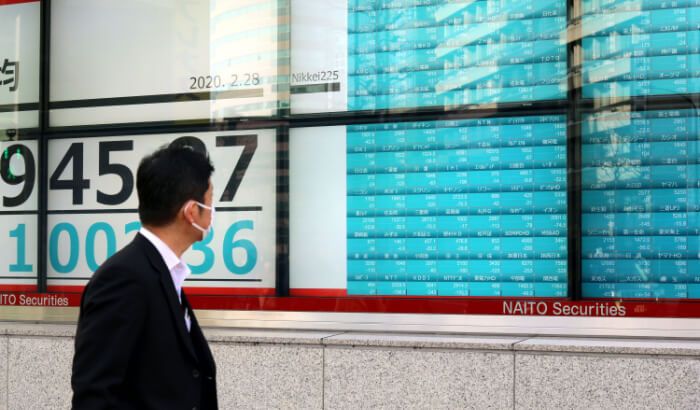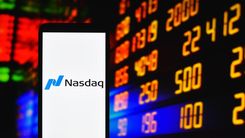Thursday Sep 28 2023 14:22

5 min

On Thursday, the Nikkei 225 Index fell by 1.54%, closing at 31,872, while the broader Topix (Tokyo Price Index) also dropped by 1.43% to reach 2,346 — a near four-week trough.
The decline wiped out gains from the previous session, primarily due to rising oil prices and government bond yields, which negatively impacted risk sentiment. The surge in oil prices to one-year highs was primarily driven by supply constraints, while the benchmark 10-year U.S. Treasury yield reached its highest level since 2007, influenced by expectations of sustained higher interest rates, as the Federal Reserve appears committed to its “higher for longer” stance.
The Japanese market has "extended the trend in U.S. trade where economic cycle-sensitive and high-tech shares were under pressure from soaring yields in 10-year U.S. bonds", Iwai Cosmo Securities told the AFP news agency.
Higher oil prices have not only lifted energy companies’ shares, but also driven speculation that the Fed might ramp up its fight against inflation. The U.S. central bank signaled it intends to carry out one more interest rate rise before the end of the year. The federal funds rate is currently set within the 5.25% to 5.5% range.
"Day in and day out, the ongoing reality of higher-for-longer interest rates sets in deeper as the Fed's messaging strengthens on 'The Street'," added Stephen Innes of SPI Asset Management.
Japanese Prime Minister Fumio Kishida instructed his cabinet on Wednesday to develop a new economic package by the end of October. The aim is to mitigate the effects of inflation and bolster the economy through increased wages and investments.
Japan's Finance Minister, Shunichi Suzuki, recently stressed that the nation is open to considering all possible measures to address excessive currency fluctuations. He reiterated a cautionary message regarding speculative activities involving the yen, which is currently grappling with nearly eleven-month lows against the U.S. dollar.
On Wednesday, the dollar to yen exchange rate reached 149.71 and continued trading at 149.40 on Thursday in the Asian market.
Сalculate your hypothetical P/L (aggregated cost and charges) if you had opened a trade today.
Market

Instrument


Account Type
Direction
Quantity
Amount must be equal or higher than
Amount should be less than
Amount should be a multiple of the minimum lots increment
USD
EUR
GBP
CAD
AUD
CHF
ZAR
MXN
JPY
Value
Commission
Spread
Leverage
Conversion Fee
Required Margin
Overnight Swaps
Past performance is not a reliable indicator of future results.
All positions on instruments denominated in a currency that is different from your account currency, will be subject to a conversion fee at the position exit as well.
The Nikkei index has retraced approximately 5% from its peak in June, which marked a 33-year high. However, it still boasts a year-to-date (YTD) gain of approximately 23%. It continues to be the top-performing stock exchange in Asia for 2023, thanks in part to robust foreign capital inflows.
The index’s heavyweight constituents saw notable losses on Thursday, including:
What is the Nikkei 225 Index?
The Nikkei, short for Japan's Nikkei 225 Stock Average, stands as the leading and most-respected index of Japanese equities. It is a price-weighted index comprising Japan's top 225 blue-chip companies that are actively traded on the Tokyo Stock Exchange.
The Nikkei plays a role similar to that of the Dow Jones Industrial Average (USA30) in the United States.
Previously known as the Nikkei Dow Jones Stock Average from 1975 to 1985, it currently bears the name of its sponsor, the Nihon Keizai Shimbun, or Japan Economic Newspaper, commonly referred to as Nikkei, which oversees the computation of the index.
Calculation of the index — the oldest index in Asia — began in September 1950, with data being retroactively computed back to May 1949. Some of the most well-known companies featured in the Nikkei include Canon Incorporated, Sony Corporation, and the Toyota Motor Corporation.
The Nikkei was originally established as part of Japan's post-World War II reconstruction and industrialization efforts. Unlike many other indices, the constituent shares within the Nikkei are price-weighted, meaning they are ranked based on their individual prices rather than their market capitalization. All valuations are denominated in Japanese yen.
A comprehensive review of the Nikkei's composition takes place annually in September, and any necessary adjustments are implemented in October.
When considering indices or shares for trading and price predictions, remember that trading CFDs involves a significant degree of risk and could result in capital loss.
Past performance is not indicative of any future results. This information is provided for informative purposes only and should not be construed to be investment advice.
Asset List
View Full ListLatest
View all
Wednesday, 16 April 2025

5 min

Tuesday, 15 April 2025

6 min

Tuesday, 15 April 2025

6 min


